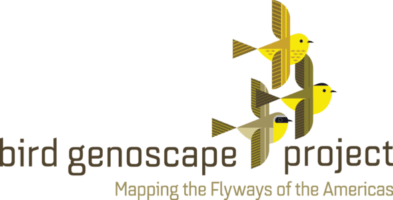Veery
Veery are long distance migrants, breeding across the northeastern United States and Canada, the Appalachian Mountains, and areas of western North America while spending the winter months in central South America. Their widespread breeding distribution has resulted in four described subspecies based on plumage coloration, but the concordance of these subspecific designations to population genomic structure still needed to be explored.
Team: We are working with Dr. Ben Winger from the University of Michigan to construct a genoscape for Veery (Catharus fuscescens). Kimmitt et al. (2023) investigated whether population genomic structure for Veery could be resolved by combining thorough range-wide geographic sampling and whole genome sequencing data. As a result of this paper, 4 genetically distinct populations of Veery were revealed – Eastern (blue), Southern (orange), Interior West (pink), and Pacific Northwest (green).
This genoscape was made possible by tissue samples archived and curated in museum-based biodiversity collections. For access to these samples, we thank the curators, collections staff, and field collectors from the following institutions: Cleveland Museum of Natural History, New York State Museum, Royal Alberta Museum, University of Alaska Museum, University of Michigan Museum of Zoology, and University of Washington Burke Museum. Full details of sampling are provided in Kimmitt et al. (2023) here.

The four genetically distinct populations of Veery (Catharus fuscescens) across the breeding range: Eastern (blue), Southern (orange), Interior West (pink), and Pacific Northwest (green). Genetic clusters are visualized as transparency levels of different colors overlaid upon a base map from Natural Earth (naturalearthdata.com) and clipped to the species breeding range using an eBird shapefile. Veery Image by © Birds of the World
